Best international phone plans in 2024 — what travelers need to know
Heading overseas? Find out what your cellphone provider charges if you use your phone

- T-Mobile phone plans
- Verizon phone plans
- AT&T phone plans
- Google Fi plans
- Other options
- Device compatibility and eSims
- 5G coverage when traveling
Checking out the best international phone plans is as crucial for an overseas trip as making sure your passport is in order. After all, you don't want to land at your destination only to find you have no coverage — or that you have to pay through the nose for service.
Fortunately, all the major U.S. wireless carriers offer some kind of travel benefit with their best cell phone plans . And if those options aren't good enough, you can also find supplementary travel packages that augment the data plan you already have in place. The trick is to make sure those options keep you covered around the globe without busting your budget.
1. T-Mobile : Best choice for travelers 2. Verizon : TravelPass options 3. AT&T : Best for travel in Latin and Central America 4. Google Fi : An underrated traveling companion 5. Other options : Other international phone plans to consider
The best international phone plans will let you make calls and browse the web when you're in another country (though there might be a fee on top of your normal monthly rate, depending on which carrier you use). Different plans might provide coverage in specific countries, and how long you plan on traveling could also impact your choice of plans. Your method of travel — be it by plane or cruise ship — also affects which plan is best for you.
All of these are things for globetrotters to consider when shopping for wireless coverage. You're going to want one of the best unlimited data plans since they tend to offer the most travel-related perks. If you haven't travelled internationally in a while, it's smart to double-check what options are out there since the best phone carriers have overhauled their plans and packages available to travelers.
Here’s a look at the travel policies and perks for the three top U.S carriers along with information on Google Fi, which offers a plan that definitely appeals to frequent travelers.

T-Mobile international phone plans
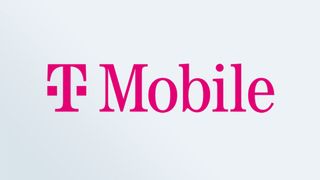
T-Mobile has shed some of its plans, though the good news is that most of the remaining options provide some benefits for overseas travel. Subscribe to Go5G, Go5G Plus or Go5G Next, and you enjoy unlimited data and texting in more than 215 countries around the world. If you want to place or receive calls, you’ll be subject to the local rate depending on where you want to go. You don’t need to notify T-Mobile of your travel for your overseas benefits to kick in.

T-Mobile Go5G Plus Plan | Unlimited Data | $90/month T-Mobile's Go5G Plus plan has the edge over the cheaper Go5G option, with better travel benefits. You get 15GB of data when you traavel in Mexico and Canada (compared to 10GB for Go5G), and you also enjoy texting and Wi-Fi on any flight where internet is available. Even better, you can use your data in 215-plus countries at no extra cost. The first 5GB of data you use use will be high-speed data (with 5G speeds supported where available). Go5G subscribers only get high-speed data in 11 European countries; otherwise, data speeds are capped at 256 kbps.
Travel perks in current plans: As part of T-Mobile's Beyond Connected program, data speeds reach 256 kbps when you're overseas. If you subscribe to the standard Go5G plan ($75 for a single line) and you're in one of 11 European countries, you can enjoy 5GB of high-speed data every month, thanks to a partnership with T-Mobile parent Deutsche Telecom.
The perk gets better when you upgrade to Go5G Plus, which starts at $90/month for one line of data). That plan treats you to 5GB of high-speed data in 215 countries.
Go5G Next, T-Mobile's most expensive plan at $100/month for a single line, has the same travel benefits as Go5G Plus, but adds the ability to upgrade your phone every year. If that's not important to you, stick with Go5G Plus and pay $10 less each month on your wireless bill.
T-Mobile customers can take advantage of free Wi-Fi on American, Delta, Alaska Airlines and United flights. Go5G Plus subscribers get full texting and Wi-Fi with streaming during flights, where wireless is available. If you opt for Go5G, you're covered on four flights per year with full streaming, plus unlimited texting; after those four flights, you can stream one hour of video. Delta SkyMiles members also get free Wi-Fi on domestic U.S. flights courtesy of T-Mobile — even if they get their wireless service from another carrier.
In Mexico and Canada, T-Mobile allows you to use up to 10GB of data if you're a Go5G customer; speeds are slowed to 128kbps after that. Go5G Plus members enjoy 15GB, with speeds slowing to 256kbps if you use more than that amount.
T-Mobile includes travel benefits in two of its remaining senior plans, with identical travel perks between the $100 Go5G Plus 55 option and the $120 Go5G Next 55 plan. (Note that those monthly prices cover two lines of data; one line of either Plus or Next cost $70 and $80, respectively.) Travel perks include high-speed data and text when you travel abroad, plus unlimited in-flight connectivity. When you travel to Canada or Mexico, you get 15GB of high-speed data. Both plans also include a year's membership to AAA for road travel in the U.S.
If you opt for T-Mobile's lower cost Essentials unlimited plan, you'll get 2G roaming in Canada and Mexico, but have to pay for data elsewhere.
Trip-specific passes: T-Mobile offers International Pass options for travelers who want high-speed data during lengthier stays overseas. A 5GB International Pass gives you that much high-speed data along with unlimited calling for 10 days. It costs $35. T-Mobile's $50 International Pass increases high-speed data to 15GB and extends the length of the pass to 30 days. The carrier also offers a $5 daily pass that gives you 512MB of high-speed data, and unlimited calling between the 215 or so Simple Global destinations.
Cruise rates: Pricing on cruises will vary according to which cruise you’re taking. You can check T-Mobile’s site to see what your pricing will be.
Verizon international phone plans

Verizon phones generally work all over the world, especially if you've got a phone built in the last few years. But where you travel significantly influences how much you’ll have to pay. As for which is the best Verizon phone plan for travelers, that all depends on how frequently you go overseas. There's a clear choice for regular globetrotters, but Verizon's less expensive offerings allow you to tack on travel benefits, too.

Verizon Unlimited Ultimate | Unlimited Data | $90/month Verizon's Unlimited Ultimate plan offers the most benefits for world travelers. Verizon promises "full international connectivity," meaning you'll be able to use talk and text for free when overseas; you also get 10GB of high-speed data every month that you can use in other countries. Unlimited Ultimate is Verizon's most expensive plan, so unless you take frequent trips, you may be better served by Unlimited Plus ($80/month for one line) or Unlimited Welcome ($65/month). Those two plans can add on a $10/month Travel Pass options that provides three days of talk, text and data when you're overseas. You can drop the Travel Pass add-on from your plan in months were you don't need it. Verizon lets family plans mix and match lines so one person can get Unlimited Ultimate, while the others subscribe to the cheaper options.
Travel perks in current plans: Of Verizon's three unlimited plans, the best for frequent travelers is the Unlimited Ultimate option, which lets you use talk and text in other countries just like you would in the U.S. You also get 10GB of high-speed data to use overseas every month.
Unfortunately, Unlimited Ultimate is Verizon's most expensive plan, costing $90 a month for one line. (And that's after a discount for enrolling autopay.) There are cheaper options — Unlimited Welcome and Unlimited Plus — that include travel perks. Both plans let you text internationally to 200-plus countries. You can also use LTE data when traveling in Mexico and Canada. You're limited to 0.5GB of data consumption per day in those two countries before your speeds are slowed to 2G, and you can't use more than half of your talk, text and data in those countries over a 60-day period.
In addition to the base Welcome Unlimited and Unlimited Plus packages, you can opt for $10 monthly add-ons for your Verizon plan — some covering streaming services, another providing hotspot data and so on. The relevant package is Verizon's $10/month 3 TravelPass Days add-on, which saves you $20 a month on travel benefits as you pick up three passes during monthly billing cycles. You can accrue up to 36 passes for using talk, text and data when traveling overseas.
Unlimited Welcome starts at $65/month for one line, while Unlimited Plus is $80. If you have a family plan, you can mix and match so that different lines of data subscribe to different plans — helpful if there's one person in the family who travels a lot and would benefit from the Unlimited Ultimate perks.
Trip-specific passes: Let's talk a little bit more about the TravelPass . It's Verizon's daily option for international coverage, and it’ll cost you $5 per day per device for each day you’re out of the country if you travel to Mexico or Canada and don't have an unlimited plan. In 185 other countries — including China, France and Germany — Verizon charges $10 per device per day. TravelPass gets you 2GB of 5G data, and unlimited data at 3G speeds after that; the passes also come with unlimited talk and text.
If you know you’ll be traveling for a bit more time, consider Verizon’s monthly option, which the carrier recommends for trips lasting at least 10 days. International Monthly Plans at Verizon cost $100/month, but in exchange, you get 250 minutes of talk, unlimited texts and 20GB of high-speed data. (Use that, and you get unlimited data at 3G speeds.)
Verizon also offers pay-as-you-go pricing for international travel. You’ll pay 99 cents per minute in Canada and Mexico, Guam and the Northern Marianas Islands. Rates go up to $1.79 in 130-plus countries and $2.99 in 80 other places. Each text message you send will cost you 50 cents, and each received text will set you back 5 cents. Your data will be charged at a rate of $2.05 per megabyte no matter where you are.
Cruise rates: Pay-as-you go rates on cruise ships cost $1.99 for each minute of talk and 50 cents for every sent text message. You’ll pay 5 cents per message received. Verizon has a data plan for cruise passengers, too, with $30/day giving you 500MB of data plus unlimited texting and 50 minutes of talk time. For in-flight connectivity, you can opt for the same pay-as-you-go rates for cruise trips or you can pay $20 per day for unlimited data.
AT&T international phone plans

AT&T also comes with varied international pricing depending on where you want to go. Canada and Mexico travel is covered in many top AT&T plans, and if you pay up for the Unlimited Premium option, you can use your plan in many Central and South American countries. Traveling elsewhere? Then you had best look into AT&T's travel passes.

AT&T Unlimited Premium| Unlimited Data | $85.99/month It's AT&T's most expensive unlimited plan, but Unlimited Premium has the best perk for travelers — you can use your talk, text and data at no extra cost in 20 Latin American countries. As with other AT&T unlimited options, you also enjoy talk, text and data coverage when traveling in Canada and Mexico.
Travel perks in current plans: If you’re heading to Mexico or Canada, AT&T already covers all of your voice, data and text with its four different unlimited plans — Starter, Extra, Premium and the entry-level Value Plus option. AT&T offers a lone tiered data plan with 4GB of data that you can use in Canada and Mexico (though roaming may be at 2G speeds). Both unlimited and tiered data plans feature unlimited texting to 120-plus countries.
The Unlimited Premium plan is the best option for travelers headed to the Americas, as you'll be able to enjoy unlimited text, talk and data at no additional cost in 20 Central and South American countries.
If you do a lot of international calling from home, AT&T offers unlimited calling to 85-plus countries from the U.S. for $15 per month for each line. Calls to another 140-plus countries get discounted rates under this plan.
Trip-specific passes: For anyone off to Europe, the Caribbean, Latin America or the Asia Pacific region on a short jaunt, AT&T recommends its $12-a-day International Day Pass , which comes with unlimited talk and text and data governed by your plan; service is available in 210-plus countries. Each device you take overseas needs its own Day Pass, but you can add extra phones for $6 a day, on top of the first device.
You'll never have to pay for more than 10 days of day passes on any one bill, even if your trip lasts longer. International Day Passes also kick in automatically when you use your phone abroad — you get a text message letting you know you're covered.
Cruise rates: On cruises , AT&T offers a $60/month Cruise Basic plan that covers 100 minutes of talk and unlimited texting while also offering 100MB of data. Need more of everything? Then try the Cruise Plus plan ($100/month), which includes 1GB of data on top of unlimited talk and text.
Google Fi international phone plans

If you do a lot of international traveling, don't ignore Google Fi Wireless , the wireless service set up by Google that uses T-Mobile's cellular towers to provide coverage. International travel is built into two of Google Fi's plans — the Unlimited Plus and Flexible options.

Google Unlimited Plus| Unlimited Data | $65/month The Unlimited Plus plan is the way to go with Google Fi, as you can use your data at no extra cost when traveling overseas. Google Fi customers who pay by the gigabyte of data used are also eligible for this perk.
Travel perks in current plans: You've got two options with Google Fi — tiered data through the company's Flexible plan or a pair of unlimited data options. Flexible coverage costs $20 a month for talk and text plus $10 for each GB of data you use. (Data usage is rounded off to the nearest megabyte so you only pay for the data you consume.) Google stops charging you after you use 6GB a month, meaning you'll never pay more than $80.
If you find unlimited data plans more appealing, Google has you covered there, too — it also offers a $65 Unlimited Plus option that rolls in unlimited talk, text and data. Unlimited Plus subscribers now get a year of YouTube Premium as a perk.
The real benefit to either Unlimited Plus or Flexible is that those plans cover you when you're traveling in 200-plus countries. When you're overseas, Google Fi charges the same rate for data usage, whether you're on an unlimited data plan or paying by the gigabyte. Voice calls cost 20 cents (though calls placed over Wi-Fi are free) and you get unlimited SMS messaging.
Alas, Google's $50/month Simply Unlimited plan is not eligible for the free data perk when traveling. That said, all three of Google Fi's plans let you use talk, text and data in Mexico and Canada.
Google Fi is even more appealing now that Google has opened up service to all phones, including iPhones. Note that phones optimized for Google Fi — Google's Pixel phones (currently the Pixel 8 , Pixel 8 Pro , Pixel Fold and Pixel 8a ) along with a selection of Samsung phones and Motorola budget devices — can switch seamlessly between cellular coverage and Google's Wi-Fi hotspots, while other phones cannot.
Trip-specific passes: Unlike the other carriers here, Google Fi doesn't offer travel passes for extended trips. Your only option is to get coverage through the Flexible and Unlimited Plus plans.
Cruise rates: Google Fi is not available when you're at sea — only when you're on land in one of the 200-plus countries covered by the carrier.
Other international phone plan options
Discount carriers typically don't provide much in the way of benefits for travelers, but there are some exceptions. The most noteworthy alternative is Visible , which has expanded the travel perks for subscribers to its $45/month Visible Plus plan .
Visible is owned by Verizon and uses its parent company's network for coverage. The Visible Plus plan features unlimited data, including access to Verizon's high-speed 5G network. Travelers will be particularly interested in the unlimited talk, text and 2GB of daily data available through Visible Plus when traveling in Canada and Mexico. Visible Plus customers are also eligible for one free Global Pass day per month, in which they can use talk, text and data at no charge in 140 countries. Global Passes normally cost $10.
Best international phone plan: Device compatibility and eSims
Traveling overseas used to mean checking to see if your phone would be compatible once you set foot in another country. But those days are drawing to a close now that 3G networks are shutting down, eliminating much of the distinction between phones that work on either GSM and CDMA. If you've got a recent smartphone that connects to LTE, chances are strong it's going to work just fine in other countries. (You still might want to confirm that your phone works on the LTE bands available in the country you're heading to prior to your trip, just to avoid any unpleasant surprises.)
Many phones now support electronic SIM cards or eSIM technology, where you no longer need to swap in a local SIM card to make your smartphone work with an overseas network. (Since the iPhone 14 , Apple devices sold in the U.S. only feature eSIM support — that includes the newer iPhone 15 models.) One of our editors took an international trip using an eSIM for her phone and found it easy to setup and use with a local network — in fact, she plans to use the eSIM approach on all future travel.
That said, not every country supports eSIM. And depending on your phone carrier in the U.S., you might already have options that cover your phone use in other countries.
International phone plans: What about 5G?
As noted above, many of the plans that offer international travel either have you connect at whatever speed is available locally or at a reduced speed in cases where you're drawing from your own data plan. But what if you've got a 5G phone that can connect to faster networks overseas?
For the most part, we'd expect your phone to operate as before, either at whatever speed the local network offers or a capped speed if that's part of your carrier's travel plans. However, in a few instances, U.S. phone carriers have started making deals with overseas wireless providers that allow their customers to access 5G speeds when roaming. You should check with your carrier for information about the country you're going to travel in.
Sign up to get the BEST of Tom's Guide direct to your inbox.
Get instant access to breaking news, the hottest reviews, great deals and helpful tips.
Philip Michaels is a Managing Editor at Tom's Guide. He's been covering personal technology since 1999 and was in the building when Steve Jobs showed off the iPhone for the first time. He's been evaluating smartphones since that first iPhone debuted in 2007, and he's been following phone carriers and smartphone plans since 2015. He has strong opinions about Apple, the Oakland Athletics, old movies and proper butchery techniques. Follow him at @PhilipMichaels.
- Don Reisinger
Now's a great time to try a discount phone carrier — 4 great deals to get you started
Act fast! Visible’s unlimited data plan discount is about to disappear
Android notifications could change in a big way — here's how
Most Popular
- 2 Ecovacs Deebot T30s Combo review
- 3 13 best Halloween decor deals — shop spooky savings from Amazon, Walmart, Target and more
- 4 iPhone 16 Pro pre-order delays — here’s the latest shipping dates
- 5 Netgear Orbi 770 review
- PRO Courses Guides New Tech Help Pro Expert Videos About wikiHow Pro Upgrade Sign In
- EXPLORE Tech Help Pro About Us Random Article Quizzes Request a New Article Community Dashboard This Or That Game Happiness Hub Popular Categories Arts and Entertainment Artwork Books Movies Computers and Electronics Computers Phone Skills Technology Hacks Health Men's Health Mental Health Women's Health Relationships Dating Love Relationship Issues Hobbies and Crafts Crafts Drawing Games Education & Communication Communication Skills Personal Development Studying Personal Care and Style Fashion Hair Care Personal Hygiene Youth Personal Care School Stuff Dating All Categories Arts and Entertainment Finance and Business Home and Garden Relationship Quizzes Cars & Other Vehicles Food and Entertaining Personal Care and Style Sports and Fitness Computers and Electronics Health Pets and Animals Travel Education & Communication Hobbies and Crafts Philosophy and Religion Work World Family Life Holidays and Traditions Relationships Youth
- Browse Articles
- Learn Something New
- Quizzes Hot
- Happiness Hub
- This Or That Game
- Train Your Brain
- Explore More
- Support wikiHow
- About wikiHow
- Log in / Sign up
- Computers and Electronics
- Phone Plans
How to Use an AT&T Mobile Phone Internationally
Last Updated: March 28, 2024 Fact Checked
wikiHow is a “wiki,” similar to Wikipedia, which means that many of our articles are co-written by multiple authors. To create this article, 16 people, some anonymous, worked to edit and improve it over time. There are 7 references cited in this article, which can be found at the bottom of the page. This article has been fact-checked, ensuring the accuracy of any cited facts and confirming the authority of its sources. This article has been viewed 299,326 times. Learn more...
The majority of mobile phones offered by AT&T have built-in frequencies and features that allow them to function efficiently when you travel overseas to other countries. To use your AT&T phone overseas, you will be required to activate a roaming feature on your phone account that allows you to connect to the mobile phone towers at your overseas destination. If you do not want to activate the roaming feature or pay the additional rates for phone calls, messaging, and data capabilities, you can contact AT&T to have your phone unlocked so you can use an international prepaid Subscriber Identity Module (SIM) card.
Activate AT&T's International Roaming Service

- Visit AT&T's "Travel Guide" website featured in the Sources section of this article to verify your mobile phone's functionality in other countries. If you do not have Internet access, call AT&T's International Customer Care department for assistance at 1-800-331-0500. [2] X Research source
- Select the continent and country you are traveling to and click on the "Continue" button.
- Select the manufacturer and model of your AT&T mobile phone and click on "Continue."
- Review your phone's ability for voice and data services in the country you are traveling to. Voice services include phone calls and text messaging; whereas data services include email and Internet connectivity.
- If your AT&T mobile phone will not work in the country you are traveling to, you may want to consider upgrading your phone model or renting a mobile phone when you arrive at your international destination.

- Click on the "Details" link under the "Rates and Coverage" column to view your rates for the country you are traveling to. Rates for voice calls will vary depending on the country; however, messages and data charges have fixed rates regardless where you travel to.
- Each outgoing text message will cost 50 cents (0.36 euros), whereas each outgoing picture and video message will cost 1 dollar and 30 cents (0.94 euros).
- Data services will cost 1.95 cents per kilobyte, i.e. $19.50 (~15 EUR) per megabyte; In Canada it costs 1.5 cents per kilobyte ($15.00 per megabyte).
- If you travel overseas frequently, you may want to consider signing up for an international rate plan or discount package that may provide you with lower roaming fees. Visit AT&T's International Roaming website featured in the Sources section of this article or call AT&T at 1-800-331-0500 to sign up for an international package.

- You may call AT&T's International Customer Service department at 1-800-331-0500, dial 611 directly from your mobile device, or visit an AT&T retail store.

- To make phone calls or send messages, you will be required to dial the "plus" symbol, followed by the country code, then the phone number you are calling. For example, if you are calling a United States phone number, dial the "plus" sign, enter the number "1" for the country code, then dial the 10-digit phone number you are calling.
Unlock your AT&T Mobile Phone

- AT&T can unlock your mobile phone if you meet specific eligibility requirements. You must have had active AT&T service for at least 60 days, your account must be current on payments, your phone model must be available from other service providers or companies, and an unlock code must be available from the manufacturer. [5] X Research source
- Apple iPhones cannot be unlocked; however they have the ability to function overseas using AT&T's international roaming feature.

- Prepaid SIM cards can usually be purchased from stores in airports, department stores, or from phone merchants. You may want to ask the vendor salesperson about the rates and applicable fees for your prepaid SIM card.

Community Q&A
- Call AT&T's International Customer Service line free of charge if you have questions about roaming while you travel. Dial the "plus" symbol on your phone, followed by the phone number 1-916-843-4685 to speak to an AT&T representative. [7] X Research source Thanks Helpful 0 Not Helpful 1
- After you call them you can actually give them your local number and the AT&T representative will call you back. Thanks Helpful 0 Not Helpful 0

You Might Also Like

- ↑ https://www.att.com/international/
- ↑ https://www.att.com/Common/merger/files/pdf/international_calling/world-quick-ref-fs-en.pdf
- ↑ https://www.att.com/international/long-distance/
- ↑ https://www.att.com/support/article/wireless/KM1009432/
- ↑ https://www.att.com/deviceunlock/
- ↑ https://support.apple.com/en-us/109357
- ↑ https://about.att.com/content/dam/snrdocs/ATT%20International%20Roaming%20Fast%20Facts.pdf
About This Article
If you’re travelling internationally, you can still use your AT&T mobile phone with a little preparation. Visit AT&T’s travel guide website to see if their service will work in the country you’re travelling to. You can also check the roaming rates there. To activate international roaming on your account, you’ll need to call AT&T’s international customer service department. Alternatively, if you’ve had your SIM card for at least 90 days, you’re up to date on your payments, and your phone’s eligible, call customer service to have your phone unlocked. Then, buy a prepaid SIM card when you arrive at your destination. For more tips, including how to dial a U.S. number from overseas, read on! Did this summary help you? Yes No
- Send fan mail to authors
Is this article up to date?

Featured Articles

Trending Articles

Watch Articles

- Terms of Use
- Privacy Policy
- Do Not Sell or Share My Info
- Not Selling Info
wikiHow Tech Help Pro:
Level up your tech skills and stay ahead of the curve
Advertiser Disclosure
Many of the credit card offers that appear on this site are from credit card companies from which we receive financial compensation. This compensation may impact how and where products appear on this site (including, for example, the order in which they appear). However, the credit card information that we publish has been written and evaluated by experts who know these products inside out. We only recommend products we either use ourselves or endorse. This site does not include all credit card companies or all available credit card offers that are on the market. See our advertising policy here where we list advertisers that we work with, and how we make money. You can also review our credit card rating methodology .
The Best International Cell Phone Plans For Travelers [Verizon, T-Mobile, AT&T, Google Fi]
James Larounis
Senior Content Contributor
570 Published Articles 1 Edited Article
Countries Visited: 30 U.S. States Visited: 35
Keri Stooksbury
Editor-in-Chief
43 Published Articles 3389 Edited Articles
Countries Visited: 50 U.S. States Visited: 28
![att cell phone international travel The Best International Cell Phone Plans For Travelers [Verizon, T-Mobile, AT&T, Google Fi]](https://upgradedpoints.com/wp-content/uploads/2019/11/Woman-using-phone-in-front-of-Eiffel-Tower.jpeg?auto=webp&disable=upscale&width=1200)
Table of Contents
What phones can you use internationally, the best international cell phone plans, saving on international rates, final thoughts.
We may be compensated when you click on product links, such as credit cards, from one or more of our advertising partners. Terms apply to the offers below. See our Advertising Policy for more about our partners, how we make money, and our rating methodology. Opinions and recommendations are ours alone.
Key Takeaways
- Verizon’s TravelPass allows you to use your domestic plan abroad for $5 per day for Mexico and Canada and $10 for an additional 130 countries.
- AT&T’s Unlimited & More plan allows you to take your data, talk, and text to Mexico and Canada but charges $10 per day in 100+ other countries.
- Google Fi offers flexible data plans with extensive international coverage and competitive pricing.
Your phone is your map, source of information, and a translator. These modern conveniences have made international travel easier and safer. Whether you’re leaving for a year abroad, going off to become an expat, or are just heading for a long weekend in Mexico, you’ll need to sort out what you want to do for an international cell phone plan.
Similar to figuring out how international plugs work, making sure your passport is ready , and deciding on what to pack , your phone requires some preparation before you leave to travel internationally.
If you decide to stick to your current carrier or switch cell phone providers, the company you work with may charge you extra for your travels. Make sure you understand your plan carefully and know what it will cost to use your data, minutes, and texts — and what happens when you go over.
Once a few technical words get thrown around, many people think they won’t be able to understand how any of this works. Don’t worry, using a phone overseas isn’t as difficult as it can sometimes sound.
The first thing to understand is that different companies and countries all use their own technologies and frequencies. You need a phone that is compatible with these technologies.
Verizon uses a technology called CDMA (Code Division Multiple Access). Most other carriers and the world use what’s called GSM (Global System for Mobile Communication). There are phones on Verizon that also support GSM, but those that don’t won’t work as world phones.
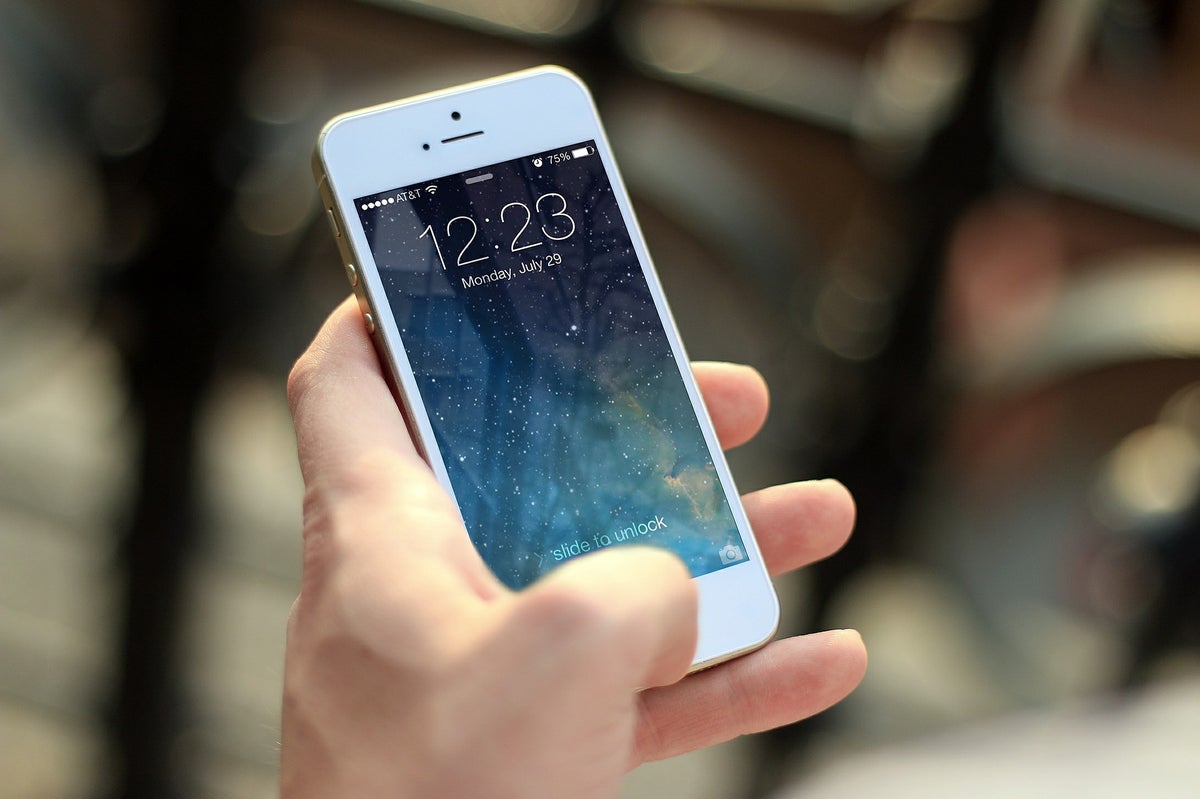
Rather than explain the technical differences between GSM and CDMA, which often confuses folks, it’s important to understand that carriers use different technologies, and different parts of the world use different systems — what is relevant for you is which plans and carriers you can use abroad.
Hot Tip: If you bought a phone advertised as “unlocked” or “SIM-free,” it should be designed to be ready to use on global GSM networks.
Every carrier offers a list of popular models of “world phones,” including such options as the iPhone XRS Max and Samsung Galaxy S10.
Many of the phones you get for free or discounted in exchange for signing up for a service contract are locked. This means they are locked to the network the contract is with. Your cell phone provider prevents your phone from using another network, and it may not be able to work internationally.
Hot Tip: If your phone is locked, try asking your cell phone company if they will unlock it for you.
Unfortunately, there isn’t a one-size-fits-all option for international cell phone plans. Below, you’ll find information on all the major carriers and their plan options, along with the pros and cons of each. Use this to sort out what will work best for you and go with your gut.
Be aware that your needs will be different if you are traveling short-term versus a month or more. Plans like Verizon’s Above Unlimited have restrictions when you use more than 50% of your talk, text, or data while you’re traveling internationally (meaning, you shouldn’t use a U.S.-based plan when abroad full-time). They sometimes severely limit (or even cancel) your cell phone service when this happens. Keep this in mind when you’re reviewing your options.

Your first option on Verizon is its TravelPass plan , which gives you the option to take your regular talk, text, and data with you on your trip (meaning, you use whatever amount of talk, text and data speeds you regularly use within the United States).
You will be charged $5 a day (on every line) for days you use your service in Mexico and Canada. There is a list of 130 additional countries where you can use your phone at a rate of $10 per day. Most popular countries are included in this list, such as Argentina, Australia, Chile, France, the Netherlands, South Africa, the United Kingdom, and more.
Activating your TravelPass through the Verizon Wireless app is all you need to do to have coverage and it’s a simple add-on to your normal monthly bill.
When you arrive at an international location, your phone will automatically recognize where you are and will connect to the local signal. Once it does, your TravelPass kicks in and it won’t renew or use another pass until 24 hours (not a full calendar day) have elapsed. If you land in a foreign country at 2 p.m. on one day and leave at 11 a.m. the next day, you only use 1 TravelPass.
If you use a lot of data uploading photos and using maps while you’re traveling, then you should be aware that the 4G speeds you rely on with Verizon are only available for your first 512 MB on the TravelPass. Once you’ve passed 512 MB, Verizon will throttle your speed down to 2G.
The Verizon Wireless Above Unlimited plan will offer you unlimited data, no contract, for $95 per month. You can receive a $5 a month discount if you set your payments to auto-pay.
This plan isn’t an add-on, but is one that you can use when you’re on brief trips abroad when you feel like it. Essentially, instead of charging you separate per-use days like the TravelPass add-on, the passes are built-in to the plan itself.
Talk, text, and data are included while you’re in Mexico and Canada (no extra charge) and the plan comes with 5 TravelPasses every month. This means you can use a TravelPass for talk, text, and data in 130 countries for 5 days per month with no extra expense. If you exceed the 5 free days a month, then you’ll continue at the normal rate of $10 per additional day.
Again, once you’ve used 512 MB of 4G speeds, you’ll be throttled down to 2G.
For comparison, if you decide to pay as you go on Verizon while abroad, you’ll be charged top rates. It costs $.99 a minute for calling in Canada and Mexico, $1.79+ in most other countries, $.50 for every text you send, $.05 for every text you receive and $2.05 for every MB of data you use. A simple app download or directions on a map can cost you several hundreds of dollars, so keep this in mind if you decide to pay as you go.
For cruise ships, there’s a fairly basic plan that’s included with your basic service. It will cost $2.99 a minute for calling, $.50 to send a text, and $.05 to receive a text; no data capabilities are available while at sea.

- You don’t have to worry about unlocking a phone because you’re still on the Verizon network.
- It’s easy to add for short trips.
- The Verizon U.S. LTE coverage has been great for a long time.
- The unlimited plan includes the 5 TravelPasses, as well as free talk and text in Mexico and Canada.
- Your personal number stays the same at no extra cost.
- This option can be pricey. The $5-$10 a day TravelPasses add up quickly, especially with multiple lines and on long trips.
- While there are many places covered in its 130 locations, there are also many that still aren’t, so you’ll want to check to be sure you’ll have coverage for your specific trip before signing up.
Bottom Line: This Plan Is Great For: People who already use Verizon and don’t want to have to call to add an international add-on. If you take frequent and short trips abroad in areas where it has service, the Above Unlimited is a great choice.
T-Mobile is a great option for international travel because its plans make things simple.
The T-Mobile One plan for unlimited data lets you keep your unlimited data and texting when you travel to 210 locations. However, it caps your data at a shockingly low 128 kbps. This means that even just browsing web pages (exclusive of video) you’ll be throttled down to 2G speeds. It also charges for international phone calls, so if you talk a lot on your phone this can become expensive quickly.
To combat these downsides, T-Mobile offers International Passes for faster data while you’re abroad. Its 5 GB pass keeps you on the 4G network for 10 days with unlimited calling at a cost of $35. It also has an option for 15 GB for 30 full days at $50.
Another option is a $5 pass with 512 MB of high-speed data and unlimited calling. This is much more limited, but if you’re traveling for a short period and don’t believe you’ll be making many calls on FaceTime or another data-consuming app, this can be a simple add-on with enough to get online at faster speeds.
Cruise rates vary depending on the ship or destination you’re traveling to (you can check here for rates ), but as an example, if you choose to travel on the Royal Caribbean Voyager of the Seas which sails in the South Pacific, your at-home T-Mobile plan includes no data on the cruise ship, $.50 for sent texts, and $5.99 a minute for calls.

- The 2G speed data is free with your regular plan.
- Expansive coverage in 210 locations, which basically means almost everywhere.
- While it covers a great many countries, when you get beyond major U.S. cities the coverage can be spotty.
- International phone calls can become very expensive very fast since they are not included.
Bottom Line: This Plan Is Great For: People who travel frequently and want international service included at no additional expense. This plan is cheapest when you don’t mind super slow 2G speeds when traveling abroad.
On both the Unlimited & More and the Unlimited & More Premium plans on AT&T , you will be able to travel to Mexico and Canada with all of your talk, data, and text already paid for. Its Mobile Share Plus plans allow you to use your talk, text, and data when you are in Mexico.
In 100+ other countries, AT&T offers an International Day Pass for $10 a day, offering the unlimited talk, text, and data already in your regular plan.
This charge can add up quickly when you’re on longer trips, though. The AT&T Passport plan lets you use your normal within-U.S. plan for 30 days while you’re out of the country. AT&T recently redid this plan, since the old AT&T passport option only offered 200 MB of data, which is just not enough for most people.
The Passport plan costs $60 for 30 days and offers 1 GB of data and unlimited texting. You can raise this to 3 GB of data for $120 for the month. At that point, you should never go any further if you value your budget, because it charges you $50 for every GB over the 3 GB. Phone calls are not included and you will be charged $.35 per minute.
If you’re headed onto a cruise , AT&T also has you covered with 2 plans. Its $100-a-month plan includes unlimited talk and text and 200 MB of data, with additional data costing $2 per MB. Its $50-a-month cruise package includes 50 minutes of talk (overages charged at $2 per minute), unlimited texting, and no data.
Data on cruising is expensive no matter which plan you choose, so if you can, subscribe to the onboard Wi-Fi that your cruise ship may offer.
For comparison, if you don’t choose one of these plans, you’re charged at insane rates: $3 per minute for talk, $.50 for each text sent and over $6 for every MB of data you use. Yikes!
- It’s easy to use and add to your account.
- You are staying on the AT&T network so you don’t need to find an unlocked phone.
- There isn’t any data speed throttling, which is common on other networks.
- You can take phone calls on your regular number without paying any extra fees.
- If you’re on a share plan, you’ll need to monitor the data usage.
- While there are many places that are covered (over 100), there are many that still aren’t.
- The $10 fee every day for every line will add up very quickly. If you go on a family trip with 4 lines and are traveling for 5 days you could see an additional $200 on your monthly bill.
Looking for more information? See our detailed piece dedicated to AT&T International Phone Plans including countries, coverage rates, and more.
Bottom Line: This Plan Is Great For: People who love data and texting, but aren’t big on making phone calls. It’s not the best if you are on a shared plan and going to be buying an International Day Pass for everyone in your group, but the 30-day plans with unlimited data are excellent for users who mostly need its phones for data or texting while on an extended trip.

Alternative Choice: Google Fi
Google Fi doesn’t come up as an option as a major carrier (yet). While it may not yet be a mainstream option, it is one that is becoming increasingly popular with frequent travelers.
Google Fi treats international data and domestic data the same. It uses the cell towers of T-Mobile and US Cellular and covers over 200 locations.
Internationally, your calls will cost $.20 , unless you are on Wi-Fi, which will be free. You still have unlimited text messages while traveling internationally.
Its plans cost $20 for a month of unlimited talk and text and every 1 GB of data is $10 a month. The data is rounded off to the nearest MB meaning you only pay for the data you actually use. If you are a heavy data user, it stops charging you at 6 GB. This means your bill will never be over $80 a month.
Google Fi offers a few phones, but it is also open to using most phones you’ve purchased elsewhere, including the iPhone. Buying one of its phones (like the Google Pixel or some of the Moto and LG phones) makes it so that you can switch between cell networks and hotspots easier.
If you’re using Google Fi aboard a cruise ship, make sure to connect to the onboard Wi-Fi for free calls.
- International data and domestic data are treated the same.
- Google Fi covers 170+ destinations.
- There is no contract; you pay monthly.
- To sign up for Google-Fi, it sometimes offer great incentives such as high-dollar gift cards or freebies.
- Even with the combination of T-Mobile and US Cellular cell phone towers, your coverage at home may vary.
- Some users have found Google-Fi difficult to sign up for.
Bottom Line: This Plan Is Great For: Frequent travelers and those who have an approved phone or who are interested in buying a Google Pixel (or other phone sold by Google). It’s important that the T-Mobile/US Cellular cell towers work well for you in your local area when you’re back at home.
There’s no doubt that using your phone outside of the U.S. can be a bit pricey — most major plans cost more than you pay for your domestic service. To save on these costs while outside of the country, there are a few things you can do:
Connect to Wi-Fi
This may sound obvious, but it’s one of the biggest ways you can save money. Most phone plans can make calls over Wi-Fi for no extra cost , and you are able to download movies, music, or check emails without using cellular data.
Most branded hotels offer some type of complimentary Wi-Fi for a daily nominal rate. When you’re in your hotel, enable your phone to automatically connect to the hotel’s signal so that you won’t have to think about whether or not your phone is using international roaming rates. Outside of the hotel, many museums , restaurants, and even public spaces offer complimentary Wi-Fi.
Use a Hotspot
There are several major hotspots designed for traveling. One of the largest brands is Skyroam . For as little as $9 a day, you can enjoy unlimited data. The hotspots offer a flat daily rate so you don’t have to worry about different charges for different areas or overages.
Since a hotspot usually provides unlimited data, it is more than likely cheaper than your traditional cell phone plan international service. You can connect your phone to this hotspot signal to make calls over Wi-Fi, download any necessary emails, and use your phone as a GPS, all without worrying about eating up precious data.
The only downside to using a hotspot is that it is an extra device you will have to carry with you when you are out. Some travelers clip the hotspot onto their belt, or stuff it in a backpack .
Turn off Your Cellular Data When You Aren’t Using It
Many cell phone plans charge for every day you use talk, text, and data abroad — and the more days you use it, the higher your charges. There may be some days, however, where you don’t need data as much — for example, you might be inside all day where you can connect to Wi-Fi, or you may be flying between countries where you will be away from a cell signal.
Whatever the case, if you shut off your cellular signal (or turn your phone in Airplane Mode, as many people do), your phone won’t connect to a network and you won’t be charged for that day’s worth of usage.

The best international cell phone plan will be an individual decision.
While Google Fi isn’t one of the major mainstream U.S. carriers, it shouldn’t be overlooked as it is one of the strongest options for international plans, especially those who rely heavily on data.
T-Mobile’s plans are a strong option for those who need great coverage at home and internationally for frequent trips. AT&T’s plan for travel is great for trips to Canada and Mexico since both are included in the most basic version.
Consider what your travel plans are — where you are going and how often, what your needs are at home, and whether voice, data, or texting is most important to you. When you know what your needs are, it’s easier to make a decision on which are the best plans to get you the most coverage for the best price.
Related Posts

UP's Bonus Valuation
This bonus value is an estimated valuation calculated by UP after analyzing redemption options, transfer partners, award availability and how much UP would pay to buy these points.
- Is the Big Tech Boys Club Failing Women?
- Watch! Wolverine Movies in Order
The 10 Best Tips For Using A Cell Phone During International Travel
Traveling abroad? Use these tips to stay connected without going broke
:max_bytes(150000):strip_icc():format(webp)/BradStephenson-a18540497ccd4321b78479c77490faa4.jpg)
- Western Sydney University
- Switching from Android
iPhones and Android smartphones will work in any country you travel to, but their functionality can be limited depending on your current mobile plan, whether you want to rent a SIM card or portale Wi-Fi devices upon arrival, and how well you prepare your apps before your departure.
Here are 10 things you need to know to save some money and get the most out of your smartphone when traveling internationally.
Confirm International Texting, Calling, And Data Fees
By far the most-important thing you need to do before traveling abroad is to check with your service provider about their current policies relating to international cell phone use and what your current contract already allows.
Global roaming functionality used to be an extra feature that users would have to manually opt into using for an additional fee. This has now changed and many cell phone service providers such as Verizon, AT&T, and T-Mobile now activate international texting, calling, and data features automatically as soon as the handset is used in a foreign country.
This activation usually incurs a pricey fee that's recharged on a daily basis and can get very expensive if you're planning to travel for a long period of time. Metro PCS' World Calling is another popular service many people use for making international phone calls while traveling.
Mobile providers frequently update their international roaming services with new prices, features, and payment options. Verizon , AT&T , and T-Mobile each have dedicated pages on their official websites that detail their current options. However, you may have signed up for a contract that was created before the current model launched so the updated information on their sites may not apply to you. The best advice for cell phone usage when going abroad is to talk to a customer service representative over the phone or in person about your specific mobile phone contract.
Check If Your Smartphone's Unlocked
guvendemir/GettyImagesPlus
If you're planning to use an international cell phone plan with your current provider while traveling overseas, you don't really need to worry about whether your smartphone is unlocked or not. If you're thinking of renting a SIM card once you arrive at your target destination though, this bit of information is incredibly important.
Having a locked phone means that it can only be used on one specific provider's cellular network and this means that you won't be able to use that phone in a country where that network doesn't exist. If your phone is unlocked, you can use it on other cellular networks both in your home country and abroad.
Rent A SIM Card For International Cell Phone Use
Juanma Domínguez/Moment/GettyImages
SIM card rental allows you to use all of your phone's features, such as phone calls, text messages, and cellular data, by swapping out your current SIM card for one that's compatible with the country you're visiting.
While using another SIM card, your phone will be unable to receive texts or calls to your regular phone number as the SIM card will give your phone a new number. Due to this side effect, it's recommended to tell friends and family to contact you via email or a chat app like Facebook Messenger while you're traveling.
SIM card rental is available in most regions and can be done at specialized stores in major airports and at cell phone company branches. Renting a SIM card is generally much cheaper than paying for an international roaming service, especially for those planning to travel abroad for several days or weeks.
Rent A Portable Wi-Fi Device Instead
If you don't need texting or phone calls while traveling overseas and you think you'll be fine using your smartphone's apps for communication and navigation, a popular alternative to rental SIMs is a portable Wi-Fi device .
These Wi-Fi devices are about the size of a deck of cards and can be carried in your pocket or handbag. They broadcast a strong Wi-Fi signal to which you can connect your smartphone and other devices while traveling.
Such devices can usually be rented at airports and in telephone service provider stores. Some tourist information buildings also offer them to travelers.
Invest In A Quality Battery Pack
Odds are when you're traveling overseas, you're going to be using your phone a lot more than usual to navigate and to take photos and video. Your phone will also likely be going longer without chance to recharge and all of this extra usage will use up its battery power a lot faster than normal.
To prevent you from ending up with a dead phone while on the road, some good advice for smartphone owners is to invest in a good quality battery pack that can hold a significant amount of power. These typically feature at least one USB slot which can be used to recharge your smartphone, tablet, or other electronic accessories. A quality battery pack is a solid addition to any travel tech kit.
While most battery packs can be charged by being plugged into a wall, a growing number also boast solar panels which lets them be charged by the sun. These can be useful when traveling anywhere really but they're particularly practical for travelers that go camping.

Buy A Modern USB Power Adapter
A traditional power adapter with old-school power sockets for your chargers and laptop is a necessary purchase if you want to keep your electronics charged while traveling. If you're planning to buy a new adapter though, it's worth investing in a modern model which has at least one built-in USB port .
A USB port in an adapter will save you a lot of space when packing as USB cables generally take up much less room than cables with wall plugs on one end. USB charging cables will also likely work with more than one of your devices so you won't have to bring a separate cable for everything you own.
Pre-Download Media For Long Flights
Caiaimage/AgnieszkaOlek/GettyImages
When using your cell phone for international travel, you're bound to experience significant periods of time when you have access to neither a cellular nor Wi-Fi network and accessing online content will be almost impossible.
Because of this, it's a good idea to download some content before you travel so you have something to keep you entertained during your flight or after you arrive in a foreign country. The Netflix smartphone app lets you download many of its movies and TV shows, while the official YouTube apps have the ability to download your favorite videos if you're a YouTube Premium subscriber .
If you're not a subscriber of YouTube Premium, there's still a way to download YouTube videos to your device for offline viewing.
Other good options for offline media include the first-party digital stores for iOS , Android, and Windows 10 devices, all of which allow for the downloading of movies, songs, podcasts, and TV series. Spotify is another good choice for podcast downloads and music downloads, though you'll need a Spotify Premium membership to download songs for offline listening.
Pre-Download Maps For Offline Access
KlausVedfelt/DigitalVision/GettyImages
Unless you're paying for a global roaming package when going overseas, you'll likely be arriving at your target destination with no online functionality on your phone. This can make looking up travel information on your maps app very difficult or in many cases impossible.
Some airports do offer free Wi-Fi but many don't. The airport's Wi-Fi shouldn't be relied upon either, as once you leave the airport and get in a train, bus, taxi, or Uber , your smartphone will go completely offline again.
Fortunately, many map apps allow for the downloading of maps for offline viewing before you get to your location. Google Maps supports such a feature on both Android and iOS devices while the Maps app on Windows 10 laptops and tablets also contains this functionality.
While a lot of the location data can be downloaded in map apps, most of the public transport information won't function when offline. A good alternative is to download the local public transport app for your target destination before you go. Many of these apps work completely offline and also feature some useful information on the transport services available.
Set Up Cloud Services On Your Mobile Device
Westend61 / Brand X Pictures
Having your smartphone lost, broken, or stolen during international travel is always a possibility. Fortunately, experiencing any one of these bad situations doesn't have to be as devastating as it once was due to a variety of cloud services that can back up all of your photos, videos, and app settings to the cloud for access on another phone, tablet, or computer in the future.
The iPhone and Android smartphone first-party cloud services, iCloud and Google Drive , are usually installed and enabled by default on their respective devices to save your data to their respective servers but there are also some third-party options that you may want to check out as a backup.
Dropbox and Microsoft's OneDrive two popular alternatives to the default smartphone cloud options but there are a number worth checking out. Most cloud services can work alongside each other to back up your data so if you reach your data limit on one, you can rest assured that one of the other services has picked up the slack.
Prepare For App Content Changes In Other Countries
While many apps and services can function abroad, many travelers discover that some licenced content on their cell phone's apps changes slightly despite the same app and account being used as back home.
For example, a variety of music playlists may be available in the Fitbit Coach and other fitness smartphone apps when using them in the United States but you may find your song selection to be more limited when traveling to New Zealand. Once Upon a Time and Frasier may be on your Netflix list back home, but when traveling to Australia you may find that they disappear from the Netflix app completely.
The changing of content within apps isn't necessarily always a bad thing, though. While some of your favorite shows may become unavailable in Netflix when traveling to Japan for example, you'll also gain access to a lot of great Japanese films and anime series that you wouldn't be able to watch with your Netflix account back home.
Get the Latest Tech News Delivered Every Day
- Ways to Avoid Big iPhone Data Roaming Bills
- Everything You Need to Know About Unlocked iPhones
- How to Protect Your iPhone and Data When Traveling
- How to Boost an iPhone Signal
- Everything You Need to Know About iPhone SIM Cards
- How to Take a Selfie on iPhone
- 10 Ways Your iPhone Can Help at School
- How to Check if an iPhone Is Unlocked
- How Waterproof Is the iPhone 15?
- Keep Your Current iPhone Number When Switching Phone Companies
- The 10 Best iPhone Hacks & Tips for 2024
- How to Use the iPhone’s Compass and Level
- How to Watch Movies on an iPhone
- How to Find Alternate Routes on Google Maps on iPhone
- 9 Ways to Use the iPhone 15 Pro's Action Button
- A Buyer's Guide to Apple iPhone Basics and Features
The Ultimate Guide to International Smartphone Use

Update: Some offers mentioned below are no longer available. View the current offers here .
We're all for disconnecting while on vacation. But sometimes — whether you're traveling for business or searching for directions — having an internet connection can be seriously useful, even crucial, when traveling abroad.
Not all that long ago, international travelers had to choose between paying exorbitant roaming rates from their US carrier, or worrying about securing and activating a local SIM upon arrival.
Today, things are mercifully different. There are more options, and it's more affordable than ever to stay connected abroad. Most major US carriers have adopted sensible pay-per-day rates to compete with T-Mobile and Google Fi , both of which disrupted the prior model of charging per-megabyte rates. (For reference, TPG himself was dinged by AT&T at $19.99 per megabyte in 2010 while roaming in London. He faced a $180 charge for essentially checking his email twice.)
In this guide, we'll take an in-depth look at what international roaming options exist on the major US carriers; when you should consider procuring a local SIM upon arrival; what an unlocked smartphone is (and who should consider one); and options for long-term travelers and backpackers.
Roaming With Major US Carriers
First, the good news: Every major domestic telecommunications company now offers international data roaming that isn't outrageously expensive. In some cases, throttled (read: slow) data usage is included gratis for a number of countries. Elsewhere, you're able to use your phone exactly as you would in the US for around $10 per day. For short-term stays and vacations, you should be in good shape.
If you want to avoid roaming charges altogether, be sure to leave your phone on Airplane mode even after you deplane. And if you simply want to avoid data roaming charges (but still want calls and texts to come through), visit the "settings" menu on your phone and toggle off Data Roaming.

For $10 per day, per line, you can activate AT&T's International Day Pass (available exclusively for users on AT&T's Mobile Share or Unlimited plans, but unless you're a prepaid customer, chances are high your plan falls into one of those two buckets).
To check your eligibility, log in to your AT&T account and add the International Day Pass, if shown. Make sure to toggle for each line on your account. You won't be charged a dime until you turn your phone on while in a foreign country, and the $10 per day will be added to your bill automatically. Once AT&T detects you're back in the US, those $10 charges will automatically cease.
Unlimited calls are included within countries covered by International Day Pass (currently listed as " over 100 ") and back to the US, plus unlimited texts to the world. A big boon to AT&T's plan is the speed. Your speed overseas will not be throttled, so if you're in an LTE network zone, you'll enjoy LTE speeds. For Mobile Share plan customers, we recommend resetting the data usage counter on your phone upon landing to keep track of how much data you use overseas, as your international data usage will count against your monthly data allotment.
- Effortless to add to your account
- Use your existing phone (no need to hunt for an unlocked one)
- No data speed throttling
- Take calls on your personal number at no extra cost
- Mobile Share plan users have to monitor data usage
- $10 per day, per line, can add up quickly for families and long trips
- While over 100 nations are covered, many still aren't

While Google Fi isn't a "major" carrier in terms of mass awareness, it's a well-known option for frequent travelers. You pay $20 per month for unlimited calls and texts, and $10 per gigabyte for high-speed data. If you happen to use more than 6GB, Google's new "Bill Protection" kicks in to cap your data bill at $60 per month, covering further high-speed data usage up to 15GB per month. In the US, Google Fi latches onto whichever signal is the strongest between its three partner carriers: Sprint, T-Mobile and US Cellular.
The great news here is that Google doesn't differentiate between domestic data and international data, which makes it an outstanding value for long-term travelers and backpackers . Another major perk of using Google Fi overseas is the breadth of nations that are covered (currently, over 170 ). You won't find Pitcairn Island on the list, but certain African countries like Ivory Coast, Chad and Congo (DRC) are included with Google's plan, whereas they are frequently omitted by rival carriers.

Google Fi's primary limitation is its diminutive list of supported phones. Fewer than 10 phones are supported (all of which use the Android operating system), though the Pixel 2 and Pixel 2 XL are excellent devices if you're in the market for a new handset anyway. No, an iPhone won't (officially) work with Google Fi. There are workarounds if you have an unlocked iPhone , but you'll be limited to the T-Mobile network.
- Google Fi treats international data just like domestic data
- Works in more than 170 destinations
- Monthly pricing with no contract or commitment
- The Google Fi-compatible Pixel 2 and Pixel 2 XL take amazing photos
- Even combined, Sprint, T-Mobile and US Cellular may not provide ideal coverage for you at home
- Very limited supported phone selection: you may need to buy a new phone
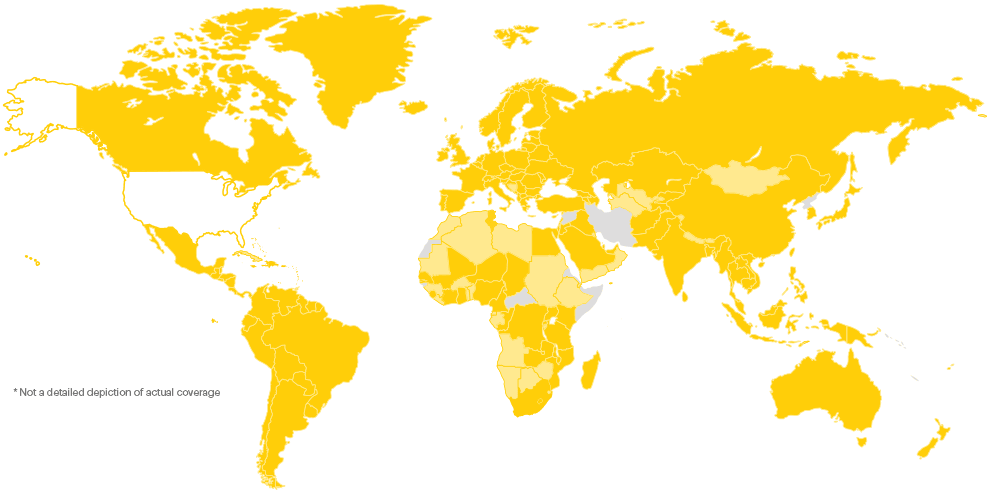
If you aren't concerned with voice calling, Sprint's international roaming plan provides text and data coverage in more than 185 destinations . Sprint Global Roaming is included on postpaid plans with LTE/GSM capable smartphones, giving you text and 2G data coverage at no extra charge. Just fly, land and start using your smartphone as you normally would. Voice calls, however, will run you $0.20 per minute or more, so plan on making calls through Slack, WhatsApp or another platform that uses data rather than voice networks.
However, that little 2G detail means that while overseas, your data will be severely throttled to 128Kbps, which is too slow to stream videos on YouTube or engage in a non-glitchy FaceTime chat. Sprint does allow users to pay extra to enable LTE speeds abroad.
- Canada and Mexico: $2 per day or $10 per week
- Other destinations: $5 to $10 per day or $25 to $50 per week, depending on Sprint's partnership agreements in the nation you're visiting
The 2G data should be fine for checking email and navigating with Google Maps, but at least there's an option to pay for a faster path should you land and determine it's necessary. One other quirk: Sprint offers a dedicated Japan Plan for just $5 per month, which enables high-speed data roaming, texting and voice calls.
- The best option for long-term travel in Japan
- 2G data speeds for free, with an option to pay more for faster access
- Rates are reasonable for those who frequent Mexico and Canada
- Support for 185-plus destinations
- It's Sprint, which doesn't have the best US coverage
- International voice calls can get expensive, fast

As with Sprint, T-Mobile's postpaid ONE plans include international texting and 2G data (capped at 128Kbps) for free in more than 210 countries. Sadly, the carrier recently nixed a $25 monthly upgrade to T-Mobile ONE Plus International, which included unlimited LTE hotspot access in the US; unlimited international calls to landlines in over 70 countries and mobile numbers in over 30 countries; unlimited 4G LTE in Mexico and Canada; and unlimited in-flight Gogo Wi-Fi within the US and boosted international data speeds to 256Kbps. It remains to be seen if T-Mobile will replace that plan with anything comparable.
- 2G data (128Kbps) for free
- Reasonable rates for travelers who frequent Mexico and Canada
- Support for over 210 destinations (basically anywhere you'd be allowed to visit)
- T-Mobile's coverage beyond major US cities isn't spectacular
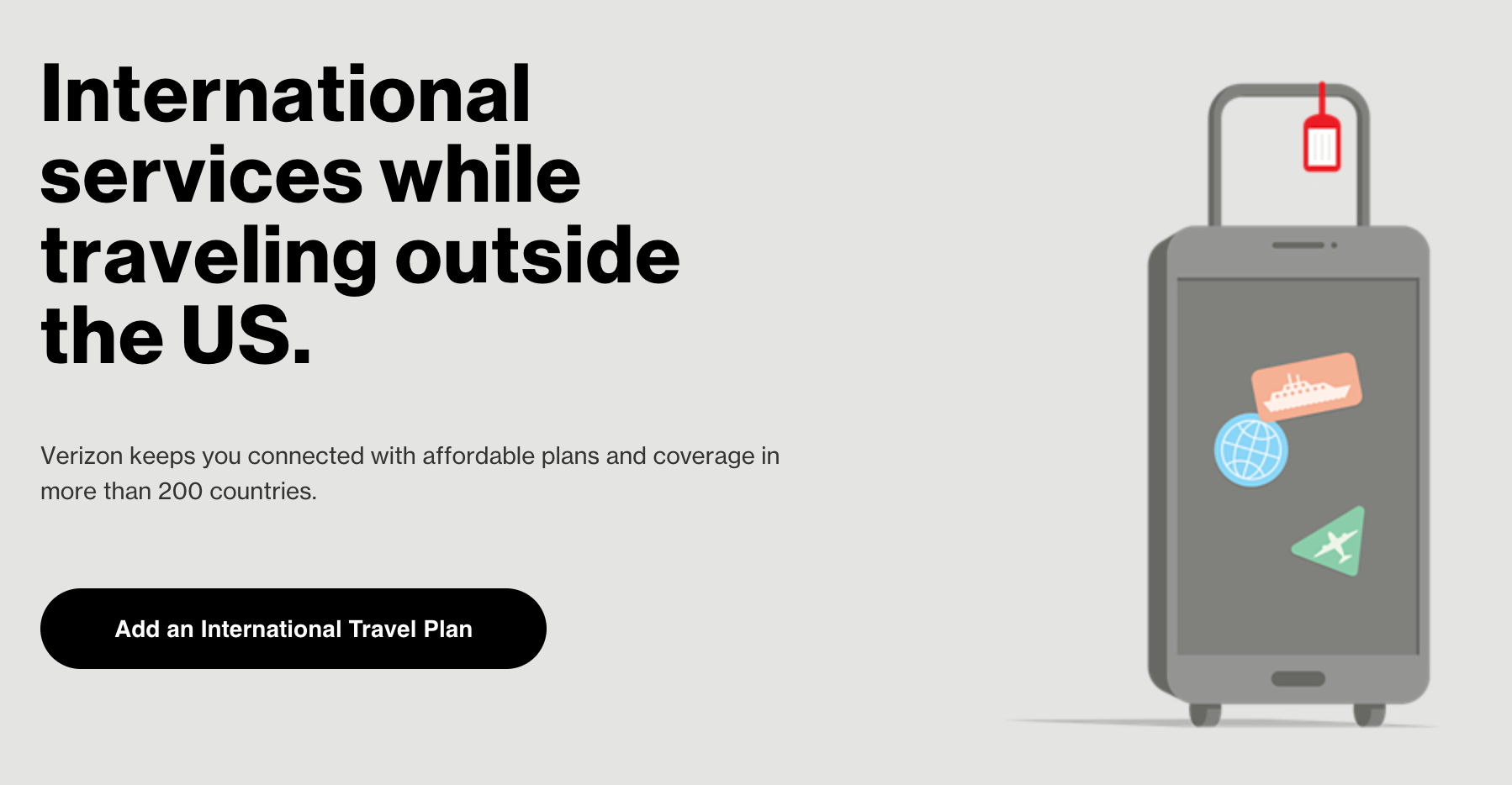
Similar to AT&T, Verizon's TravelPass allows you to take your domestic talk, text and data allowances with you. You're only charged on the days you use your device abroad: $5 a day per line in Mexico and Canada, or $10 a day per line in over 130 other supported countries. And once you activate TravelPass on your lines, nothing else is required. As with AT&T, just keep an eye on your data usage if you're using a plan with a monthly cap. You'll also want to visit Verizon's list of supported nations to make sure the place(s) you'll be visiting are covered.
- Verizon's US LTE coverage is fantastic
- $5 to $10 per day, per line can add up quickly for families and long trips
- While over 130 nations are covered, many still aren't
When to Buy a Local SIM Upon Arrival
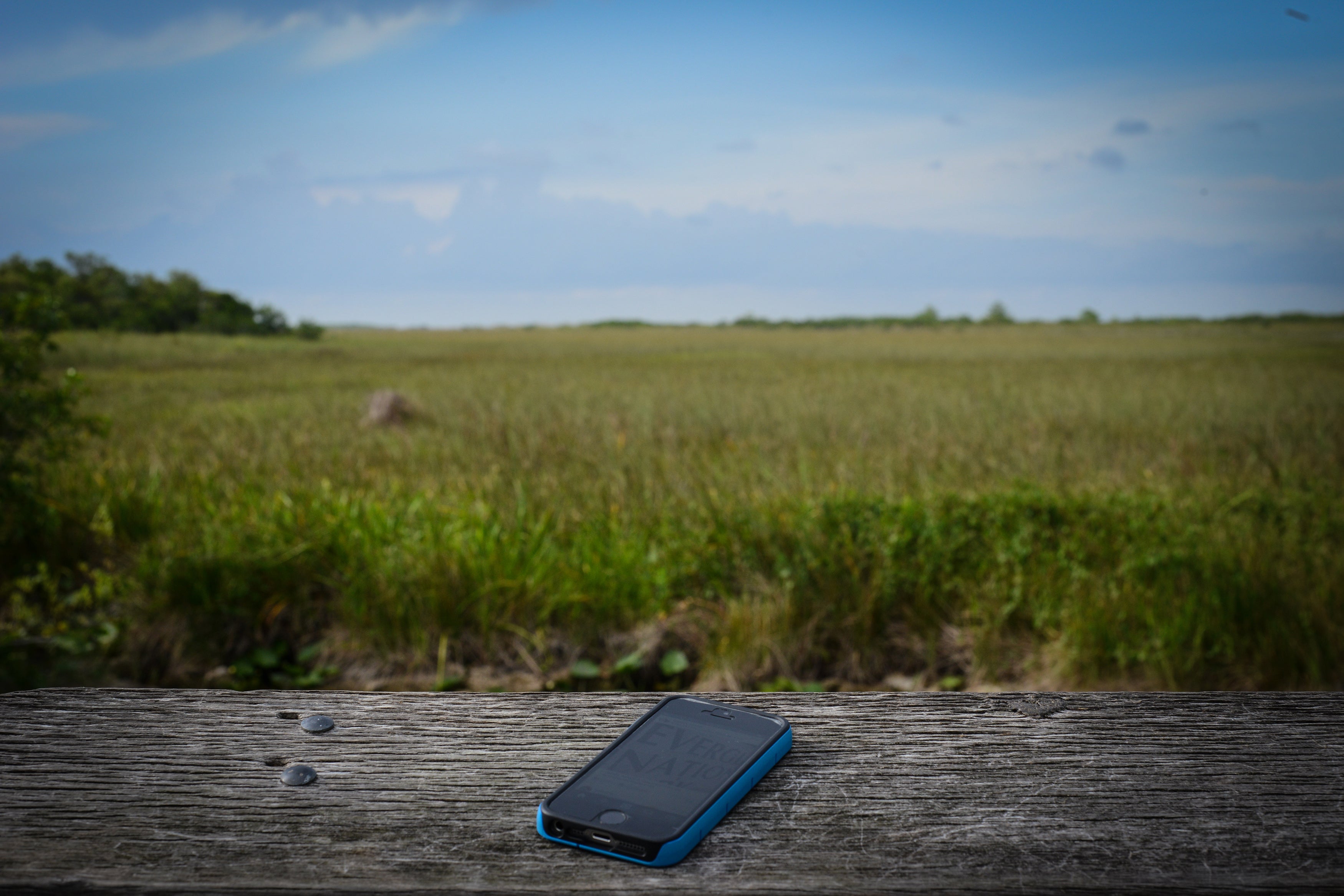
If you're planning on being in a country for more than two weeks, you can expect to use a significant amount of data. It can also be helpful to have a local telephone number to call and text with residents and businesses. That's when having a local SIM may be right for you.
Local SIMs typically cost between $20 and $50, include between 1GB and 5GB of data (plus a sizable allotment of texts and voice minutes for in-country calling), and can be purchased at minimarts or vending machines at major airports. Once you have a SIM, you can typically "top-up," or add data, texts or minutes using your smartphone and a credit card.
It can be surprisingly easy, too. London-Heathrow, for example, has an automated SIM vending machine. But then there's the rest of the world — airports like Fa'a'ā in Tahiti — where you're as likely to ride a unicorn through immigration as you are to find a store that's open and selling SIM cards with English instructions when you land.
Still, if a local SIM seems like the option for you, you'll need an unlocked smartphone.
Getting an Unlocked Smartphone
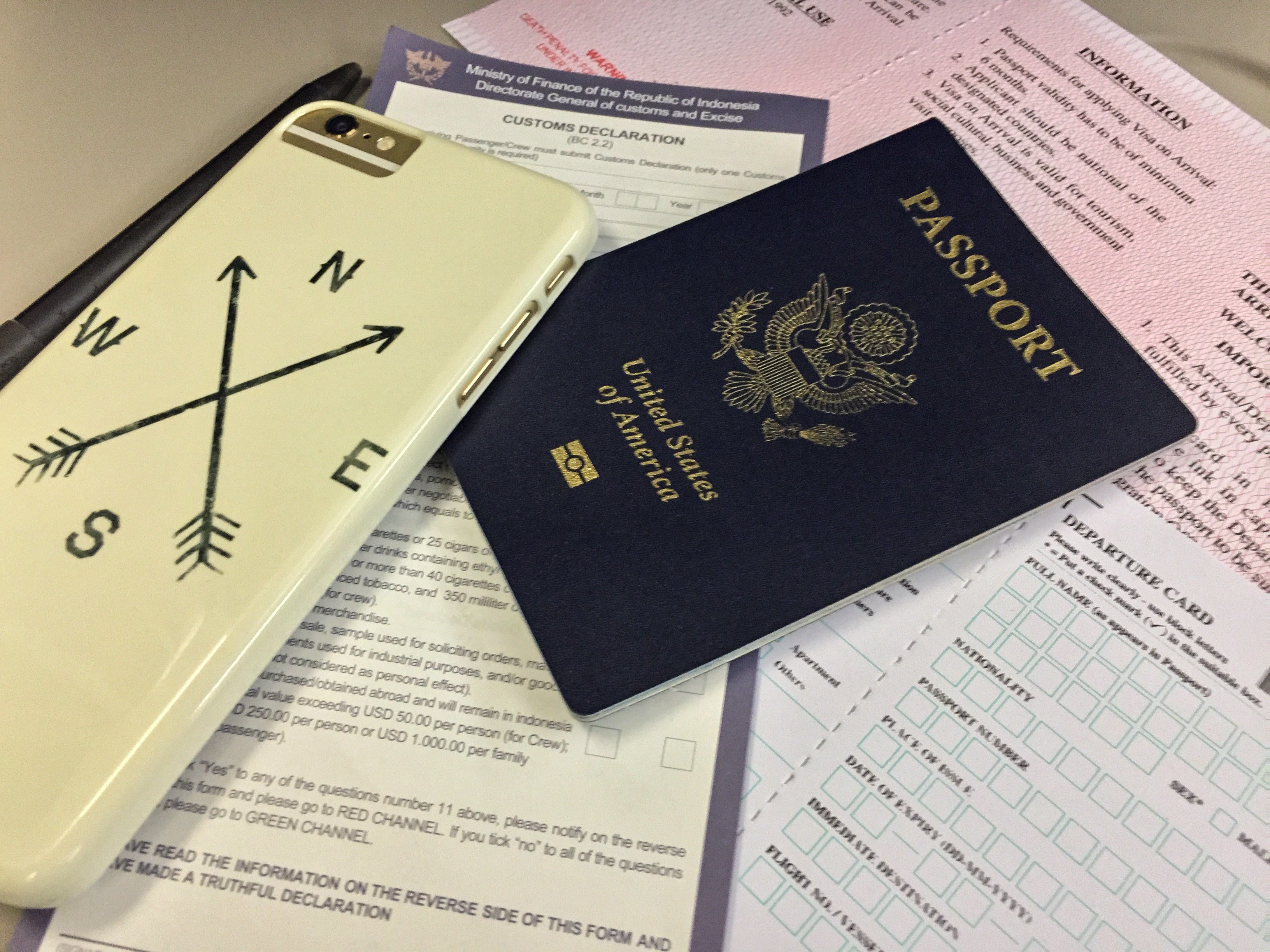
A "locked" smartphone is chained to an exclusive carrier with software settings that can't be changed by the user. Generally speaking, if you purchase a phone from AT&T, T-Mobile, Verizon or Sprint (and still owe money on it) it's locked — and will remain that way. While it's locked, it will refuse to work with any SIM from another carrier.
An "unlocked" smartphone, on the other hand, will readily accept any SIM from any carrier, either domestic or international. If you maintain solid standing with your carrier and your smartphone is fully paid off, they will almost always provide an unlock code to customers who fill out an online request form. (To save you the trouble, they're linked here: AT&T , Verizon , Sprint and T-Mobile .)
Alternatively, you can order an unlocked smartphone directly from a manufacturer like Apple, Samsung, Huawei, Motorola or Google. You can also search for a gently used, unlocked smartphone on an auction marketplace. Just don't be surprised by the cost, as the flexibility to use them with any carrier results in premium pricing.
If you're planning a whirlwind tour of Europe or Asia, you'll undoubtedly cross borders. Each country has its own set of carriers and generally, a SIM purchased in one nation won't function in another. With an unlocked smartphone, you can swap prepaid SIM cards from various countries in and out as you travel. Many of these SIMs don't expire, so much like foreign currency, you could theoretically save SIMs with remaining credit to use whenever you return.
Still, having a single SIM from Google Fi is a far more elegant solution. But that only works if you're willing to hitch your wagon to the Android operating system.
Getting a Dual SIM Phone
Frequent flyers may also be interested in scooping up a Dual SIM smartphone, which can either hold two physical SIM cards, or, in some cases, a single physical SIM card with an additional onboard eSIM. This type of phone allows a user to initiate a call, text or use data with more than one carrier (versus just a single carrier).
Phones such as the Huawei P20 Pro, iPhone XS and iPhone XS Max , OnePlus 6, Samsung Galaxy Note 9, Asus Zenfone 5Z and Honor 10 all support dual SIMs, and that list is growing rapidly. This option is generally best for regular business travelers that consistently spend time in two countries (think: Canada and Germany). Keep in mind, however, that you'll need to pay for either data or a plan for both SIMs individually.
There are two major, competing radio systems used by cell phones: CDMA (code division multiple access) and GSM (global system for mobile). In the US, only two of the major carriers (AT&T and T-Mobile) utilize GSM — but that's the network preferred by pretty much every other country on Earth. Verizon and Sprint operate on CDMA. However, most modern smartphones that support CDMA also have SIM card slots to support the LTE (Long-Term Evolution) network: the standard for data.
To cut down on the techno-babble, here's what most travelers needs to know: Very generally speaking, a GSM phone will be easier to transfer to a new network. But that's not to say it can't be done with a newer CDMA device. As long as the phone is unlocked and has a SIM card slot, it should work on a GSM network. To be sure your phone will be fully functional abroad — voice, data and texts — research the specific model of your phone and the bands it supports, and cross-reference that with the frequencies available in the countries you'll be visiting.
Using a Laptop Abroad

Many of the international plans mentioned support tethering — the function that allows your smartphone to share its data plan with other nearby devices like laptops.
That said, the 2G speeds offered by T-Mobile and Sprint won't cut it on a laptop, and both AT&T and Verizon will begin to throttle your speeds after you exceed approximately 22GB per month. Carriers are quick to notice prolonged tethering, and will typically take action on your account if you do it enough.
If having data internationally for use on a laptop is a primary concern, supplement whatever Wi-Fi you're expecting to have available with an international hotspot.
Skyroam , for example, offers a compact mobile hotspot for about $150. Once you have it, you can pay $9 per day or $99 per month for unlimited global data in over 120 countries to use on up to five devices simultaneously (phones, tablets, laptops, smartwatches). For travelers who can't take chances with coffee shop or hotel Wi-Fi, the hotspot also delivers peace of mind, and the puck itself also doubles as a charging device.
How to Choose the Right Option for You

Before deciding which phone to buy or network to choose, there are a handful of factors to consider:
- On an international trip for under two weeks, it's usually easier to use the day pass option provided by your carrier. If you also need data for a laptop, rent a Skyroam hotspot for the duration of your trip.
- On overseas trips longer than two weeks, travelers who already have an unlocked phone should see if the arrival airport sells local SIM cards. Travelers can also consider buying an unlocked phone for this purpose.
- Buy a Skyroam hotspot and carry it with you as you go, keeping your smartphone connected to data while you travel.
- If you're not married to a carrier already, consider the switch to Google Fi , as it's one of the best options for travelers.
- None of this advice really applies to cruising. Each carrier has their own rate charts for texting, calling and using data while at sea — and they're all pricey. For avid cruisers, you're better off paying for Wi-Fi once aboard.
- Whatever phone you end up using on your international escapades, be sure to use a card that offers cell phone protection , such as the Chase Ink Business Preferred Credit Card or Wells Fargo Cash Wise Visa® card (up to $600 of protection (subject to $25 deductible).
Do you have any other suggestions for staying connected abroad? Sound off in the comments below!
- Search Please fill out this field.
- Manage Your Subscription
- Give a Gift Subscription
- Newsletters
- Sweepstakes
We independently evaluate all of our recommendations. If you click on links we provide, we may receive compensation.
- Travel Tips
The Best International Phone and Data Plans: Everything You Need to Know to Use Your Cell Phone Abroad
Compare plans from AT&T, Verizon, T-Mobile, and Sprint.
Having a working cell phone while traveling internationally can make a world of difference. Think of how often you use your GPS (Which way to the metro station?) , internet browser (What time does the museum close?) , messaging apps (Hey, are we still meeting at the restaurant later?) , and mobile apps (I'll grab an Uber to meet you!) — just in a single afternoon. You'll probably want data on your next trip abroad, and perhaps a lot of it.
Alas, roaming rates can be extremely expensive. Even if you don't call or text while abroad, background updates to apps can run up unexpected roaming fees. Here's how to avoid those hidden charges, plus everything else you need to know about international plans offered by major phone carriers.
Overview of International Phone Plans
Perhaps the easiest option for continuing to use your phone while abroad is to purchase an international plan through your current carrier. This can work out to be the most cost-effective choice, but it isn't always. International roaming plans are typically best if you use your phone sparingly while abroad. The longer you travel, the higher the bill in many cases.
Before we delve into the specifics of each plan, here are some important things to note:
- With most plans — at least the ones mentioned here — you will be charged only once you begin using your phone internationally. However, if you have cellular data turned on (i.e., you're not in airplane mode), these international plans may be activated by background data from apps refreshing, email syncing, and device or software updates.
- Add these international plans to each device you'll use them on before your trip.
- Once you start using your phone in your destination, you should receive a text that the international plan is active.
- Billing varies by carrier and plan; you could be billed immediately after you begin using data abroad or after an entire billing cycle passes. However, you wouldn't normally be charged more often than once per 24 hours, even if you travel to multiple countries in a day.
AT&T International Plan
AT&T is the third largest mobile phone service provider in the U.S. If you have AT&T, here are your options:
Pay per day: Add the International Day Pass to your current plan for $10 per day, per device, to call, text, and use data as you would at home in more than 200 destinations. Your data allowance and talk minutes will be the same as your current plan, but you'll get unlimited texts to any numbers in the world. Calls must be made to the U.S. or another country on the IDP list. You can only use the day pass for 10 days per monthly billing cycle.
For longer trips: Although AT&T used to offer Passport plans that would allow account holders to pay monthly for data, talk, and texting abroad, the plans were discontinued (for individual consumers only, not for businesses) in 2021. Now, the International Day Pass is your only AT&T option outside of North America.
Traveling to Canada or Mexico: All unlimited and some limited plans will get you unlimited talk and text plus access to your data plan at no extra charge within the U.S., Canada, and Mexico. Customers on other plans can add the Roam North America feature to their existing plans to receive these benefits, too.
Verizon International Plan
Verizon has more subscribers than any other American mobile phone service provider. If you're one of them, here are your options:
Pay per day: For $10 per day, per line, Verizon's TravelPass lets you use your domestic talk, text, and data plan in more than 200 destinations outside of the U.S. Calls within the country you're visiting and calls back to the U.S. are included, but calls to another country will incur additional international long-distance rates, which vary depending on the country.
For longer trips: Verizon's International Monthly Plan costs $100 per line, per month, and gets you 250 minutes of talk, unlimited texting, and unlimited data including 20GB of high speed, then 3G speeds after that. Be mindful of your minutes on this plan — overages will cost you an additional $0.25 per minute.
Traveling to Canada or Mexico: All Verizon unlimited mobile plans allow you to use your usual talk, text, and data allowances in Canada and Mexico without additional charges. Those with other Verizon plans can buy the TravelPass for $5 per day to use in Canada or Mexico.
T-Mobile International Plan
T-Mobile offers a range of perks to international travelers, including:
Pay per day: T-Mobile's International Day Pass gives you 512MB of high-speed data and unlimited calling for $5 a day. The plan works in more than 200 countries and destinations, which T-Mobile calls "Simple Global" countries.
For longer trips: T-Mobile's Magenta and Magenta MAX plans give you unlimited texting and data in Simple Global destinations at no additional cost. With the standard Magenta plan, you get 5GB of high speed in just 11 European countries, then speeds of 128kbps after that and in other Simple Global regions. With Magenta MAX, you get high speed across T-Mobile's global range. With both, international calls cost $0.25 per minute.
Note that the Essentials plan, T-Mobile's most basic, includes unlimited international texting but no data, and prepaid plans do not include global coverage. Data speeds are slow with T-Mobile's included coverage, however, and if you want to use your phone for media streaming or just have faster data, you may want to purchase an International Pass.
The great benefit of T-Mobile international plans is that even after you've used up all your allotted data, you can still use unlimited data and texting at Simple Global speeds, unlike other carriers, which charge you for data overages.
Another perk for travelers: T-Mobile offers in-flight Wi-Fi through a partnership with Intelsat. Get one hour free with Magenta or unlimited in-flight Wi-Fi with Magenta Plus.
Traveling to Canada or Mexico: Unlimited texts and data are included at no extra cost. However, only Magenta and Magenta MAX plans will get you high-speed data in Canada and Mexico.
Sprint International Plan
Sprint merged with T-Mobile in 2020 but still offers its own mobile plans. Here are your options in terms of international coverage:
Pay per day: Sprint's day pass allows you to use high-speed data in more than 200 destinations. Depending on where you are, it costs $5 or $10 per day. You could also pay weekly — $25 or $50, respectively.
For longer trips: Global Roaming is included with all Sprint plans, providing free international texting and basic data of up to 2G speeds at no extra cost. International calls cost $0.25 per minute. If you have a need for faster data, you should purchase the high-speed data day pass.
T-Mobile and Sprint are doubly convenient as they require no activation prior to travel. Simply start using your phone while abroad and your included global coverage will kick in.
Traveling to Canada or Mexico: Texting and data at basic speeds are free on all plans. Additionally, those with unlimited data plans get a high-speed allowance while in Canada or Mexico — 5GB for Unlimited Basic subscribers, 10GB for Unlimited Plus subscribers, and unlimited high speed for Unlimited Premium subscribers. On other plans, you can buy high-speed data for $2 per day or $10 per week.
Purchasing a SIM Card Abroad
If you plan to be abroad for a longer period of time — say for a year to teach English, a two-month sabbatical, or even a month-long backpacking trip — it may make sense (and be more cost effective) to purchase a SIM card abroad. In order to use a local or international SIM card, your phone must be unlocked.
Having an "unlocked" phone typically means you own your phone outright — either you've paid all your installments or you bought the phone at full price to begin with — and have gone through the process of unlocking your phone with your carrier, often as simple as following a set of instructions online. If you bought your phone from Verizon, you might be able to avoid this process as the carrier automatically unlocks its phones after 60 days.
Local vs. International SIM Cards
Local SIM cards work only in the country where you buy them. This is often the cheapest option because you're effectively paying as a local. Local SIMs will also provide you with fast data as you'll be using local networks. You can purchase a local SIM card from a vendor when you arrive in your destination country — even at the airport, if you want.
If you plan to travel across borders, an international SIM card might be a better option as it will allow you to use one SIM in multiple countries. You can purchase and set up an international SIM before you travel, saving you the trouble of purchasing one abroad. Do your research, though, because international SIM rates can be even more expensive than your carrier's international plans. Companies such as WorldSIM , OneSimCard , Telestial , and Mobal offer international SIM cards that provide different coverage options and price points.
If you're traveling to Europe, you can purchase a SIM card that works throughout the EU. This is likely to be cheaper than purchasing an international SIM card.
How Does Using a SIM Card Work?
You can buy a local SIM card at most wireless stores and even at some airports or convenience stores. Some places may require certain documentation such as your passport. If you're nervous about putting the new SIM card into your phone, purchase it from an expert (as opposed to, say, a supermarket) so you can ask for help. Just make sure not to lose your original SIM so you can put it back into your phone when you go back home.
If you run out of minutes or data on the card, you can always go back to the store to top up or purchase more data and minutes online. Do some quick research to figure out which carriers offer the most bang for your buck in your destination.
Buying or Renting a Phone Abroad
If your current phone is still under contract, you can buy or rent a local phone in your destination (often for cheap) from a company like Mobal or Cellular Abroad , then purchase a SIM locally. Or, if you've still got an old phone tucked away somewhere, unlock that phone and use it instead for traveling.
Using a Third-party Data Provider
While a local SIM is certainly a great, cost-efficient option, most travelers aren't concerned with making calls and texting with a local phone number. If you just want to be able to have Internet access and use the apps on your phone, a third-party data-only provider is a great alternative.
GigSky , for example, is an international eSIM (no physical card required) that gives you mobile data in more than 190 destinations. It's super easy to purchase and activate — just download the app, pick a plan, download the eSIM, and you're good to go. GigSky offers four plans: seven days and 1GB of data for $8.99, 15 days and 3GB of data for $22.99, 30 days and 5GB of data for $34.99, and 30 days of 10GB of data for $68.99. If you run out, you can top up through the app.
This Trick Will Help You Type and Send Messages Faster on Your iPhone
Another option, Google Fi provides data through T-Mobile's network, and it uses Wi-Fi for calling and texting wherever available across more than 200 destinations. There are no contracts or activation fees, and rates range from $20 to $65 per line depending on how many lines you want to include. The most basic plan will get you unlimited international texting from the U.S. to other countries, unlimited data, calling, and texting in the U.S., Canada, and Mexico, and 5GB of high-speed hotspot tethering; the Plus plan will get you all that plus international calling to more than 50 destinations, data in more than 200 destinations, and unlimited high-speed hotspot tethering. If your phone is compatible, you can use an eSIM instead of a physical SIM card.
Using a Portable Wi-Fi Hotspot
If you plan to do a lot of work while you're abroad and would like constant access to Wi-Fi on your laptop instead of just on your phone, you might want to look into getting a portable Wi-Fi device . These provide Wi-Fi access wherever you bring them, plus they can be accessed by multiple people and devices at the same time. One good option for international travel is the SIMO Solis Lite , available on Amazon. It's small enough to fit in your pocket, works in more than 135 countries, can connect to 10 devices at once, and provides the option of a VPN for extra security.
Traveling Without Data
Of course, if you don't want to spend any money at all to use your phone abroad, you can simply be on the lookout for a free Wi-Fi signal. In a perfect world, free, reliable Wi-Fi would be everywhere. But in reality, open Wi-Fi networks may be few and far between while you travel, and even when available, they often provide slow, spotty connection (or none at all). If you choose to wing it with open Wi-Fi networks, just make sure to leave your phone on airplane mode. You will still be able to connect to Wi-Fi, but this ensures that you won't be charged international roaming fees because of background data running. To be extra cautious, turn off cellular data in the settings of your phone.
Charging Your Phone Abroad
After investing time and money to be able to use your phone abroad, the last thing you want is to wind up in your destination with a phone charger that doesn't work with the local outlets. Make sure that you've got the proper travel adapter before you go.
Related Articles
- Share full article
Advertisement
Come Home With Memories, Not a Shocking Phone Bill

By Steven Moity
The horror story goes something like this: A family returns from a trip abroad, and the glow from the vacation has barely begun to fade when a cellphone bill with hundreds — or even thousands — of dollars in international charges arrives. The phenomenon even has a name: bill shock .
Smartphones have become an indispensable part of international travel. You can use them to check in at the gate, go through borders, find your way around a foreign city and pay for breakfast at a sidewalk cafe. Now, it’s easier than ever to use your phone just as you would at home without getting a big hit to the wallet.
There are two major options: You can get a data plan directly through your phone company or you can swap out your phone’s SIM card, a small chip that stores data about you and your carrier — on newer phones, you can use an app that does the same thing. Here are some tips:
Pick the right plan
The three biggest U.S. carriers all offer some version of an all-inclusive international data plan. The prices and countries covered vary. Some take effect automatically when you cross a border, and others require you to sign up before your trip. Almost all of them send a text message detailing your options when your phone connects to a foreign network.
AT&T offers the International Day Pass for $10 a day, allowing travelers to use their phones much as they would in the United States. AT&T automatically adds a day pass when customers with unlimited plans connect to the network in a foreign destination.
Customers with this plan can use their phones for as many days as they want, but they’ll be charged only for a maximum of 10 days per billing cycle. The plan covers about 210 destinations. (Canada and Mexico are included in unlimited plans.) Some exceptions: Cuba and the Maldives.
Verizon has a similar offer: TravelPass , which gives customers who have Unlimited Plus, Unlimited Welcome and other unlimited plans the ability to talk, text and use data for $10 per day (there is no cap on how many days you can be charged in a billing cycle), or a monthly $100 pass . The first 2GB of high-speed data each day is included; after that, travelers get unlimited data at a slower speed.
Unlimited-plan customers heading to Canada or Mexico do not need to buy TravelPass, but for all other plans, a day pass for those countries costs $5. TravelPass covers about 210 international destinations. Exceptions: Cuba and the Maldives.
T-Mobile automatically includes international coverage at no extra cost in its most popular plans, said Mike Katz, president of marketing, strategy and products. Depending on the plan, it includes unlimited texting in over 215 destinations worldwide and 5GB of high-speed data per billing cycle (but most phone calls cost 25 cents a minute). As with AT&T and Verizon, Cuba is not covered, but the Maldives is.
T-Mobile travelers needing more high-speed data or free calling can upgrade with day passes , starting at $5 (unlimited calling, and up to 512MB of high-speed data). For longer stays, a 30-day plan with up to 15GB of high-speed data costs $50.
Swap your SIM
Subscriber identity module cards — tiny, removable chips that link a phone to its owner’s network and phone number — offer another way to save money while you’re traveling , especially if you’re taking an extended trip or using a large amount of data. Instead of signing up for a U.S. provider’s international calling plan, you can buy a local SIM card, usually as part of a pay-as-you-go or prepaid package, usually at a cheaper rate. Rates vary depending on the provider, country and offerings.
If you have a newer model of phone, you probably don’t even need to swap out — and keep track of — physical SIM cards: You may have built-in eSIM capabilities instead.
Apps like Airalo provide affordable eSIM options for hundreds of destinations around the globe. Airalo’s options include Discover Plus , a global plan that includes 10 text messages, 10 calling minutes and 1 GB of data, starting at $15 for seven days. There is also a regional plan (covering places like Europe), starting at $5 for seven days, and a local plan (for only one country), as low as $4.50 for seven days.
Two caveats to SIM swapping: Your phone generally must be unlocked (not tethered to a specific carrier), and you will usually receive a foreign phone number when you set up the new SIM card, so make sure to share that number with anyone who needs to contact you. (Your regular phone number will go to voice mail.) If you use an eSIM and your phone has Dual SIM Dual Standby technology, you may still be able to use your regular number .
Tailor the technology
There are a few technological precautions travelers can take to avoid bill shock.
First, control your data use by turning off data roaming in your phone’s settings when you don’t need it. You can also download maps when you have Wi-Fi and then use apps like Google or Apple Maps in offline mode. You can also squelch data-gulping apps individually by toggling off their access to cellular data in your phone’s settings.
Finally, consider using secure Wi-Fi (be wary of public networks) to make calls on services like FaceTime or WhatsApp to avoid voice or long-distance fees.
An earlier version of this article provided an incorrect price for Airalo’s Discover Plus global plan. It starts at $15 for seven days, not $9.
How we handle corrections
How to Make Your Smartphone Better
If your current smartphone can’t make it through the day without needing a recharge, here are a few steps to make it last a little longer.
These smartphone features that help you wind down for bed, mute notifications and maintain a regular sleep schedule may help you get more rest.
Deleting duplicates, bad shots and other unwanted files makes it easier to find the good pictures — and gives you room to take more. Here’s how to clean your phone’s photo library .
The process of backing up your smartphone has become so simplified that it takes just a few screen taps to keep copies of your photos, videos, and other files stashed securely in case of an emergency.
These days, smartphones include tools to help you more easily connect with the people you want to contact — and avoid those you don’t. Here are some tips .

COMMENTS
Then pack your bags and your phone because we're packing more value than ever into our AT&T International Day Pass. It comes with unlimited high-speed data*, talk and text. 1 Plus, you'll get 50% off additional lines used in the same 24 hours and only pay for 10 days of service 2 to help you save on long trips.
That's where AT&T International Day Pass comes in. International Day Pass lets you use your phone like you do at home for $12 per 24-hour period, with unlimited data, talk and text with your eligible unlimited plan. International Day Pass is included in over 210 destinations, including some locations that support 5G (so long as 5G access is ...
The Basic package, for smartphones only, includes 100 minutes of talk (with an overage of $1 per minute), unlimited texts and 100MB of data (with an overage of $10 per 100MB beyond that). The more extensive Plus package, for smartphones and tablets, allows unlimited talk and text as well as 1GB of data (with an overage charge of $10 per 100MB ...
The trick is to make sure those options keep you covered around the globe without busting your budget. Best international phone plans. 1. T-Mobile: Best choice for travelers 2. Verizon: TravelPass ...
AT&T will let you use international mobile data at a rate of $2.05 per megabyte in most countries. Your exact usage is actually billed per kilobyte, so if you use 100.2 MB of data during your trip, you won't be rounded up to 101 MB for billing purposes.
3. Contact AT&T to activate the international roaming feature on your mobile phone account. You may call AT&T's International Customer Service department at 1-800-331-0500, dial 611 directly from your mobile device, or visit an AT&T retail store. 4. Learn how to make phone calls while you are traveling overseas. [4]
You can simply use your phone while traveling and pay the following standard rates: Calls: $1/minute in Canada and Mexico. $2/minute in Europe. $3/minute everywhere else. Texts: $0.50 for a text-based message. $1.30 for messages with pictures or videos. Data:
Key Takeaways. Verizon's TravelPass allows you to use your domestic plan abroad for $5 per day for Mexico and Canada and $10 for an additional 130 countries. AT&T's Unlimited & More plan allows you to take your data, talk, and text to Mexico and Canada but charges $10 per day in 100+ other countries. Google Fi offers flexible data plans ...
Confirm International Texting, Calling, And Data Fees. T-Mobile. By far the most-important thing you need to do before traveling abroad is to check with your service provider about their current policies relating to international cell phone use and what your current contract already allows.
Verizon international monthly plan: Pay an extra $100 per month for 250 minutes of talk, unlimited texts and unlimited data (data speeds decrease after 20 GBs in a month) in more than 210 countries. You could also check out U.S. Mobile's plans. U.S. Mobile plans don't include calling or texting from outside the U.S.
Phones such as the Huawei P20 Pro, iPhone XS and iPhone XS Max, OnePlus 6, Samsung Galaxy Note 9, Asus Zenfone 5Z and Honor 10 all support dual SIMs, and that list is growing rapidly. This option is generally best for regular business travelers that consistently spend time in two countries (think: Canada and Germany).
For longer trips: Verizon's International Monthly Plan costs $100 per line, per month, and gets you 250 minutes of talk, unlimited texting, and unlimited data including 20GB of high speed, then 3G ...
AT&T offers the International Day Pass for $10 a day, allowing travelers to use their phones much as they would in the United States. AT&T automatically adds a day pass when customers with ...
AT&T assistance when roaming. If you need any help when roaming, you can contact customer care. If you are traveling in Mexico or Canada, dial 611 from your phone.. Or, you can call +1 408.962.1025 from a landline.. If you are roaming anywhere else that is outside of the United States, you can call calling +1.314.925.6925.. If you dial calling +1.314.925.6925 from your AT&T cell phone, you ...